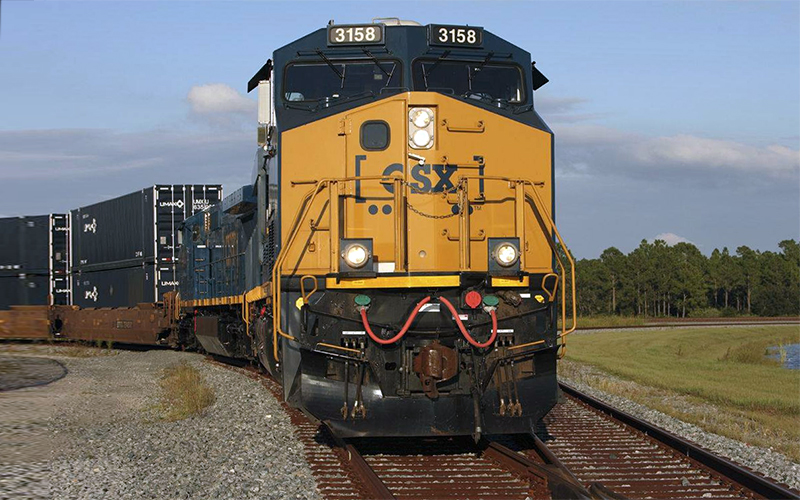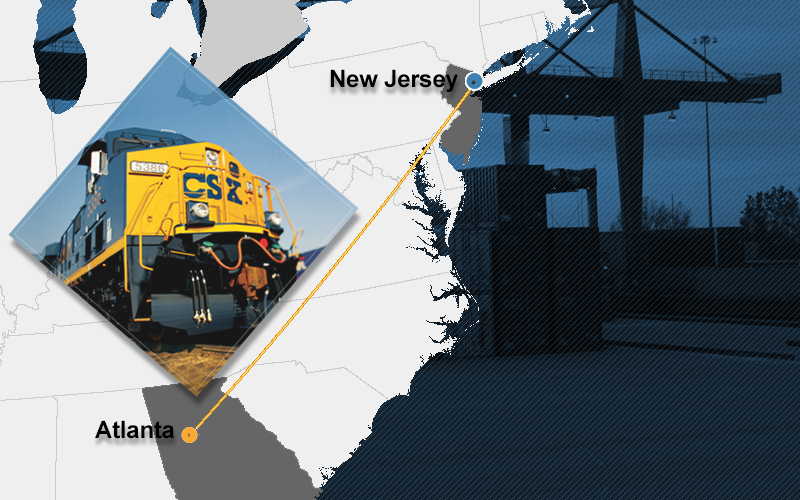Transportation Regulators Are Off The Rails, Again

Shippers argue consolidation within the industry make it tough to force the kind of deal-making that leads to lower prices due to four railroads carrying 90 percent of America’s freight traffic.
One positive of this election season is the wealth of discussion of America’s regulatory environment and the drag it puts on the economy.
But how does this work exactly? How do regulations drive up costs? What exactly does this look like?
It looks a lot like what’s going on in the railroad industry right now.
The Surface Transportation Board, which governs rail traffic, wants to make it easier for big shippers to force private railroads to switch trains to tracks owned by other railroads to accommodate delivery.
Today, shippers and railroads negotiate these settlements all the time. Railroads try to limit what is known as reciprocal switching because it is expensive, time- and manpower-intensive and throws off schedules.
But they make deals where they must because it is, in fact, reciprocal - they all occasionally need the favor returned.
The current regulation, developed as part of the Staggers Rail Act of 1980, empowers the Surface Transportation Board to force railroads to accept reciprocal switching, but only if shippers can prove anticompetitive behavior by the railroads.
Powerful shippers, organized as the National Industrial Transportation Freight League, have sought for years to change this, and they’ve finally found a regulator they can bully.
The proposal, first offered by the shippers five years ago, drops the language about proving anticompetitive behavior and instead requires only that the change requested by practicable and in the public interest and necessary to provide competitive rail service.
That lower standard would mean $7.8 billion in additional expenses for the railroads and could wipe out as much as 80 percent of the railroads’ budget for track and equipment updates.
The shippers group argues the change would create competition by forcing railroads to make the switch at already-used interchanges. But this also is where traffic is heaviest and potential for delays greatest, and it could be dozens or even hundreds of miles out of the way – all expenses borne by the railroad.
The group further says the current rules are “a formidable barrier to any U.S. business whose facility is served by only one railroad from obtaining competitive rail service through an agency-approved competitive switch.”
But the current rule has been in place more than 30 years, and not a single shipper has proven railroads have engaged in anticompetitive behavior, and few have even tried.
Moreover, as Marc Scribner, transportation analyst at the free market Competitive Enterprise Institute (where this writer used to work) described in a coalition letter signed by more than a dozen policy groups, railroad deregulation under the Staggers Act “represents one of the most significant economic policy successes in in the history of the United States.”
The industry was over-regulated and flat on its back in the late-1970s, Scribner said. The last passenger line serving the East Coast had gone broke, replaced by an even less-efficient government operation – Amtrak. Freight traffic in the East had been loaded onto Conrail, another government entity, and the future of the industry looked bleak and government-owned.
But thanks to the Staggers Act, railroads rebounded. Major U.S. railroads in 2014 supported 1.5 million jobs, $274 billion in annual economic activity, nearly $90 billion in wages and $33 billion in tax revenues.
Even though Inflation-adjusted freight rates overall are down more than 40 percent since 1980, the industry still has managed to sink $25 billion into its own infrastructure improvements in recent years and more than $600 billion since 1980.
But big shippers, such as chemical companies, agricultural products producers and others have gotten the ear of the Surface Transportation Board. They seek not a better deal but a better price, and they want government to force it.
Shippers argue consolidation within the industry - four railroads carry 90 percent of America’s freight traffic - make it tough to force the kind of deal-making that leads to lower prices.
But UPS, which ships 3,000 trailers and containers by rail every day, says the railroads are right, and this new rule would create chaos in the industry. “A new reciprocal switching scheme will lead to decreased network velocity, diminished capital investments into the freight rail network, and deteriorating rail intermodal service levels,” the company wrote in a letter to the regulators.
The rest of the shipping group’s argument, as explained in this Logistics Management article by its leader (”STB rolls out proposed reciprocal switching regulations”), amounts to “because it’s our time.”
STB rolls out proposed reciprocal switching regulations
Today’s railroads “bear no resemblance to the companies that endured smother federal regulation prior to 1980,” the article read. Deregulation was “the right medicine for an ailing industry,” but the railroads of today are “doing quite well.”
Americans would not “accept a regulatory regime for our telecommunications industry based on rules written for ‘Ma Bell’ as it existed in the 1970s” and “neither should we accept rules written to protect the bankrupt rail industry of that same period.”
Let that sink in. The rules that enabled the railroad industry to rise from the near-dead and rebuild itself as a vital link in modern multimodal shipping should be replaced by the kind of industry-favorited, bureaucracy-manipulated rules that had it flat on its back in the late-1970s.
Hopefully, with the country seemingly committed to curbing unnecessary regulations, we won’t make this mistake again.
Source: Breitbart
More from Brian McNicoll, Author at Breitbart
Related: Intermodal 3RD Morning Availability from ATL to NJ
Intermodal Rail White Papers & Guides
The X’s and O’s of Intermodal Rail in Supply Chain Management
As the coach of your supply chain, you have the opportunity to turn to your playbook and choose from multiple transportation modes to maximize the efficiency of your freight network. Download Now!
The Intermodal Rail Bracketology Guide
Learn how to identify sub-optimal full-truckload freight that is vulnerable to capacity constraints if and when a supply chain disruption occurs. Download Now!
Practical Steps for Highway to Intermodal Rail
Learn how to increase access to capacity, reduce transportation costs and mitigate exposure to future trucking regulations. Download Now!
Transportation Management Systems & Intermodal Rail
An interactive, personalized guide to learn more about the combined benefits of a TMS and intermodal rail. Download Now!
Highway to Intermodal Rail (H2R) Conversions Deliver Bottom Line Results
CSX Transportation has found that 96% of shippers have sub-optimized freight in their network. Does your organization? Find out and learn how to address sub-optimized freight in your supply chain. Download Now!
Article Topics
CSX News & Resources
Signs of progress are being made towards moving cargo in and out of Baltimore Top CSX executive places a sharp emphasis on railroading as a career path and service at NEARS Intermodal innovation? Crisis averted on U.S. railroads, with carriers and unions reaching tentative agreements CSX’s acquisition of Pan Am Railways is a done deal Baltimore breaks ground for double-stacking 126-year-old tunnel in ‘absolute game-changer’ CSX executive discusses railroad trends and themes at NEARS conference More CSXLatest in Transportation
Nissan Channels Tesla With Its Latest Manufacturing Process Why are Diesel Prices Climbing Back Over $4 a Gallon? Luxury Car Brands in Limbo After Chinese Company Violates Labor Laws The Three Biggest Challenges Facing Shippers and Carriers in 2024 Supply Chain Stability Index: “Tremendous Improvement” in 2023 Trucking Association CEO on New Biden Policy: ‘Entirely Unachievable’ Two Weeks After Baltimore, Another Cargo Ship Loses Power By Bridge More Transportation




















